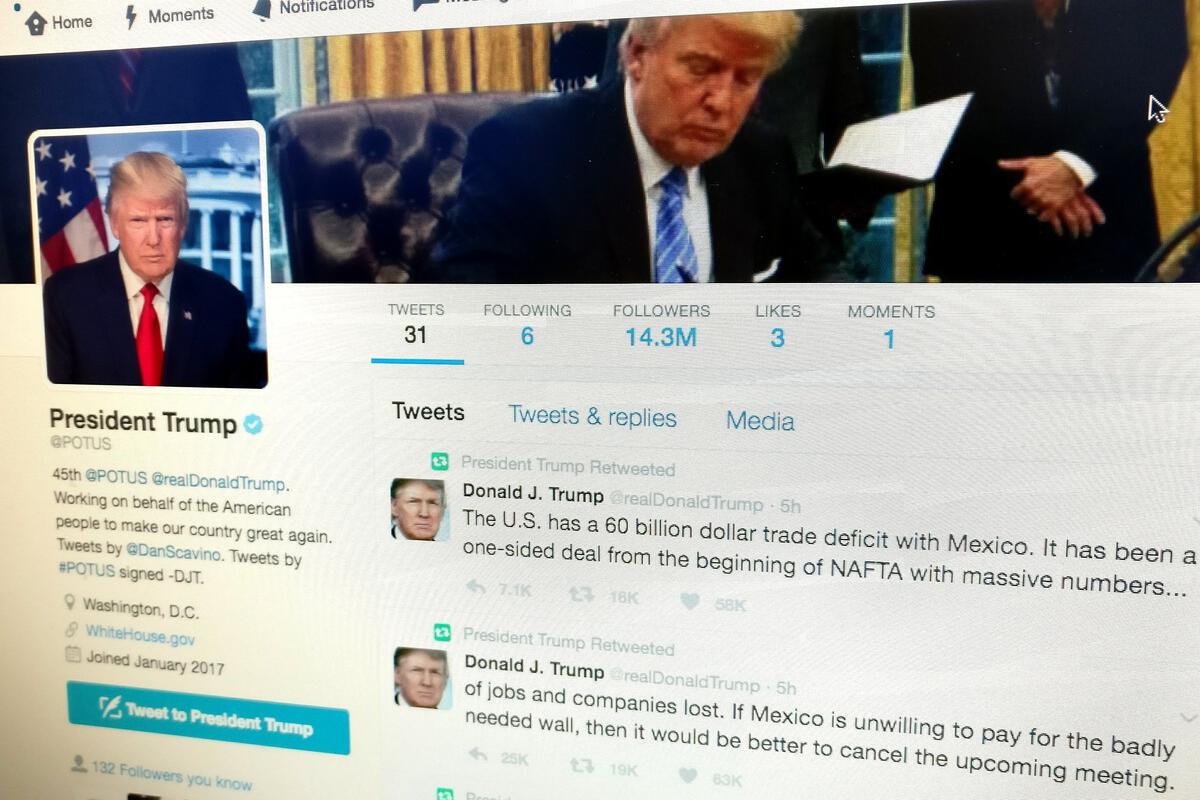Trump administration is giving us a good lesson on Twitter security

Several recent incidents involving U.S. President Donald Trump’s administration can teach users something about IT security — particularly about Twitter and what not to do with it.
It turns out that several White House-related Twitter accounts — including the president’s official account, @POTUS — until recently were revealing sensitive information that hackers might be able to exploit.
The problem revolves around the service’s password reset function. If the account holder doesn’t take certain steps to secure it, Twitter exposes information that anyone with the right skills can use to uncover what email address — in redacted form — was used to secure a Twitter account.
A hacker who goes by the name WauchulaGhost noticed the problem and began tweeting about it. He found that the @POTUS account was secured to a Gmail address that, although partially redacted, could be guessed as belonging to a Trump aide in charge of social media.
The hacker found the same issue with the Twitter accounts for the vice president, the first lady and Trump’s press secretary, all of which were also secured with Gmail addresses.
“It’s not hard to figure the emails out from there,” WauchulaGhost tweeted. “Once the email is exposed, there is a chance it can be compromised.”
Exposing your email address to the public may seem harmless. But for government officials or business executives, it can be asking for trouble.
That’s what happened in last year’s election. An aide to presidential candidate Hillary Clinton was hacked by suspected Russian cyberspies through a phishing attack sent to his Gmail address. His emails were eventually stolen and leaked to the public.
A hack can be even more devastating if it affects a high-profile Twitter account. But anyone can be a target of such attacks, said Felix Odigie, CEO of Inspired eLearning, a company that specializes in security awareness training.
“People don’t really believe these threat actors are real, or they don’t believe it’s going to happen to them,” he said. “But it’s probably only a matter of time, before you get hit at some point.”
To prevent exposing your email address over Twitter, you can go into your account’s security settings and click “Require personal information to reset my password.” That’ll force anyone trying to reset your password to enter the correct email address or phone number to continue.
Securing a presidential Twitter account with a Gmail address highlights another problem: Why are White House officials using third-party email providers?
In last year’s election, government IT security became a hot-button issue over Clinton’s use of a private email server. Critics feared it left her digital correspondence vulnerable to hacks.
Now the Trump administration has received some flak for securing presidential Twitter accounts to Gmail addresses. “It seems like bad form,” said Jake Williams, founder of security provider Rendition InfoSec. “It should really be a .gov address.”
“In that way, if there’s ever an attempt to enter the account, It’ll be monitored by their own information security people, as opposed to possibly nobody with Gmail,” he said.
That same advice can apply to any business. It’s better to rely on corporate IT infrastructure, which can be more tightly controlled, than on common third-party email providers, Williams said.
He also suggests that people secure their Twitter accounts with two-factor authentication. This requires the user to enter both a password and a one-time special code sent to their mobile phone or generated over an authenticator app.
“If the attacker ever gets a hold of your password, they still won’t be able to access your account,” Williams said.
Twitter users can access this option by going to security settings and checking “verify login requests.”
Earlier this week, the Trump administration found itself involved in another Twitter-related incident. The account for Badlands National Park in South Dakota tweeted a series of facts that seemed to challenge Trump’s assertion that climate change is a hoax.
The White House said an “unauthorized user” had used an old password from the National Park Service’s San Francisco office to access the account.
Williams suspects the Trump administration had changed the password to the park’s Twitter account but failed to revoke the OAuth token, which can also grant access.
Third-party applications can use OAuth tokens to connect to a Twitter account without the risk of handling sensitive password information. “Someone probably realized they were still hooked into the account, and decided to take it for a run,” Williams said.
The controversial tweets from the park’s account were quickly deleted, but the mishaps with the Trump administration Twitter haven’t stopped.
On Thursday, White House Press Secretary Sean Spicer was found tweeting and then deleting what appeared to be a password, although it’s still unclear what really happened.
Williams advises that White House officials use an option on TweetDeck, a Twitter dashboard, that asks the user to confirm the contents of a tweet before posting it.
“It’s saved me from sending something erroneously more than once,” he said.